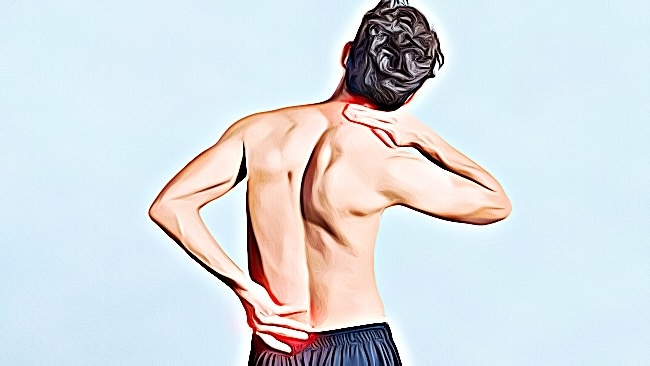Strongest Over-the-Counter Muscle Relaxer
Muscle pain can be really frustrating and distracting and throw a wrench into your schedule. Tense, aching muscles are a common source of pain. When they strike, you might be tempted to look for relief that offers fast pain relief. Whether you experience back pain, muscle spasms, arthritis, or chronic pain related to an injury, muscle relaxers can act as a remedy to provide immediate help.
However, before taking a strong muscle relaxer, it is important to be wary of the effects that this type of medication may have on your body. This blog post will shed light on what you need to know about muscle relaxers to help you make good decisions when taking them.
What Are Muscle Relaxers?
Muscle relaxers are prescription drugs that act as muscle relaxants by blocking pain signals from your nerves to your brain, decreasing muscle tension and stiffness. The FDA classifies muscle relaxers as central nervous system (CNS) depressants, which means that they slow down your brain, making you feel kind of spaced out and sleepy. These drugs can also change your heart rate and decrease blood pressure, which can be worrisome for some people.
In general, these medications are safe to take, but you must inform your doctor of any medications or supplements that you are already taking, as they can interact with your body in potentially harmful ways. If you have a history of heart problems or diabetes, you should not take muscle relaxers.
What Are Some Examples of Muscle Relaxers?
There are many muscle relaxers on the market, but these are the most commonly prescribed types:
1 – Methocarbamol
Methocarbamol is a non-narcotic muscle relaxer that is commonly used to treat muscle spasms, strains, or cramps. It works by blocking the nerve impulses that detect pain and also by affecting the body’s brain chemicals. The drug is usually taken twice a day, every day for a period ranging from two days to two weeks. This drug is considered to have a less sedating effect than others.
2 – Cyclobenzaprine
Cyclobenzaprine is also a non-narcotic muscle relaxer, but it is much more powerful than methocarbamol. It is most commonly used to treat muscle spasms or cramps that are caused by muscle fatigue. It is also used to treat pain and stiffness caused by neck conditions. Cyclobenzaprine is not recommended for use by children or women who are pregnant. It can cause drowsiness, and it may act as a sedative. This is why it is not widely recommended to be used during the daytime or waking hours.
3 – Carisoprodol
Carisoprodol is widely used to treat pain, muscle aches, and spasms. This drug is similar to cyclobenzaprine in that it affects the brain and can cause drowsiness. It is also a muscle relaxer that costs less than other comparable drugs, making it an affordable option. Carisoprodol is only available with a prescription. It should not be used by people who have been taking phenothiazines, like chlorpromazine, or who have kidney or liver problems. This drug is one that has the potential to be abused by those with a history of drug use.
4 – Metaxalone
Metaxalone is sold under the brand name Skelaxin. It is a centrally-acting muscle relaxer that is used to relieve pain and stiffness caused by muscle spasms or injury. It is also a prescription drug that is taken only once a day. Drowsiness is a side effect that may occur when taking this drug, and it is also important to not mix alcohol with this medication. Mixing alcohol with this drug can be especially dangerous to those taking benzodiazepines as well.
5 – Tizanidine
Tizanidine is a prescription muscle relaxant that is used to treat spasms, cramps, and pain. This drug is commonly used in conjunction with other central nervous system (CNS) depressants, like opioids and benzodiazepines. Like some of the other muscle relaxers mentioned above, it is not recommended for use by children, women who are pregnant or breastfeeding, and people with a history of heart problems.
6 – Baclofen
Baclofen is a muscle relaxer that is used to treat spasms and stiffness. It may, however, increase the risk of developing side effects. The most common side effects of this drug are dizziness and weakness, which are also common side effects of other muscle relaxers. Baclofen should be used with caution, especially by those who have a history of mental health disorders, such as depression.
7 – Orphenadrine
Orphenadrine is a relatively mild muscle relaxant used to treat muscle spasms and cramps. Like baclofen, it can also cause side effects like diarrhea and dizziness. Orphenadrine should not be used with any other CNS depressant medications.
Which Muscle Relaxer Is the Strongest?
Despite their name “muscle” relaxer, these drugs have a direct effect on the brain instead of on the muscles themselves. Muscle relaxers work by blocking pain signals that are transmitted from the nervous system to the brain. These drugs slow down the reaction of the nerve cells that transmit these signals, therefore relieving pain.
There is no exact way to determine which muscle relaxer is the strongest or the most potent. Each type of muscle relaxer has its own set of strengths and weaknesses. For example, cyclobenzaprine is stronger than tizanidine and carisoprodol, but it is not stronger than methocarbamol or cyclobenzaprine.

Are Muscle Relaxers Addictive?
Unfortunately, some people who take muscle relaxers can become addicted. Muscle relaxers are often used to treat symptoms of chronic pain, but if a patient is taking the drug for a long time, it can get in the way of their pain management program. This can be reported as a side effect of the drug. If you take a muscle relaxer and find that you are becoming dependent on it, it is important to seek help.
People with a history of drug abuse or illicit drug use should not be taking muscle relaxers. This is because muscle relaxants can be abused by those who are looking to get high. It is also common that muscle relaxers are used in conjunction with other drugs and alcohol, which can magnify the effects.
People who are on muscle relaxers should avoid driving or operating heavy machinery, as the effects these drugs can have are strong enough to impair someone who is not careful. In addition, the drowsy or sedative effects of muscle relaxers may not mix well with other drugs.
How Can You Tell If Someone Is Abusing Muscle Relaxers?
If you have a friend or loved one who is using muscle relaxers, there may be some tell-tale signs that their use has become problematic. The first tell-tale sign of a potential problem is if they are taking the drug as prescribed by their doctor. If they are taking a high dose of the drug, or if they are taking it for longer than is recommended, this can be a sign of a drug abuse problem.
Another sign of a potential abuse problem is if they are taking the drug in conjunction with other drugs and/or alcohol, a risky combination that can magnify the effects of muscle relaxers. Using a muscle relaxer for a period longer than is recommended can also be a sign of an abuse problem because this drug is typically only recommended for short-term use.
Last but not least, if you suspect that a loved one is using muscle relaxers, you may discover that they have some of the withdrawal symptoms that can occur when coming off of
Conclusion
Muscle relaxers are a valuable tool for people who do not have access to a physical therapist or chiropractor. Because they are so widely prescribed, the risks of abusing them are high. It is important to talk to your doctor about the potential for abuse before taking muscle relaxers for pain relief. If you are abusing a muscle relaxer, talk to a professional about your options.

